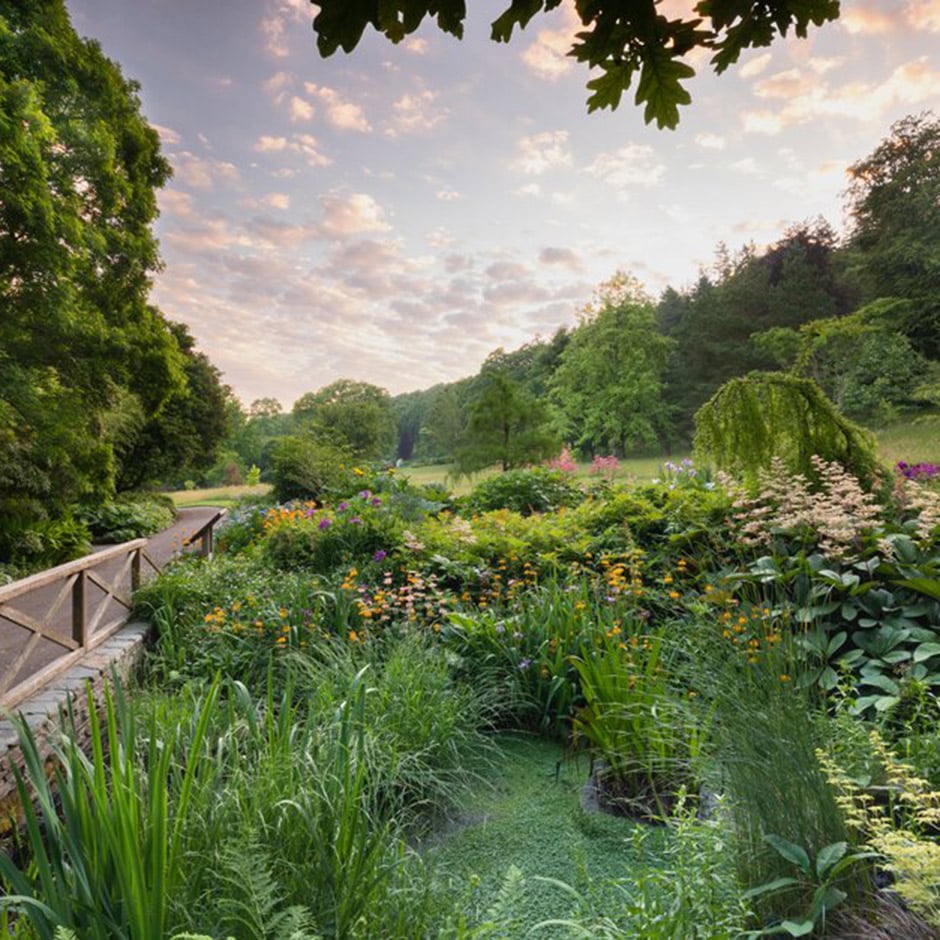Bog gardens
Creating a bog garden is the perfect use for a redundant or leaky pond, but it can also be an informal edge to an existing pond or a way of cultivating a naturally waterlogged dip in your garden. Bog gardens provide a range of attractive planting opportunities and are an excellent wildlife habitat.

Quick facts
When to make This is a good winter project but can be done any time
Difficulty Moderate
Suitable for...
Small areas are generally easier to create and maintain as a bog garden. Larger areas need to have stepping stones or walkways incorporated into the design to allow access for maintenance.
Creating a bog garden is an ideal method for converting an existing garden pond, or adding a bog area to the edge of a new pond, as the same pond liner can be used underneath the bog garden to create
When to make a bog garden
A bog garden can be constructed any time, but winter is quite a good season for ‘extra’ projects such as this, as there is generally less other work competing for attention in the garden, and you will be ready to plant up your new bog garden in the spring.
Making a bog garden
Bog gardens can be made around the edge of a pond, or used as a feature in their own right.
Making a stand-alone bog garden
- Mark out the chosen area with sand or string
- Given that you will need to excavate this area to a depth of 45cm (18in), calculate approximately the volume of soil you will need to shift (length x width x depth). If this seems excessive, consider reducing the size of the area
- Excavate the chosen area to 45cm (18in) and put the soil aside
- Line the hole with polythene sheeting or butyl pond liner at least 0.5mm thick. Place bricks or stones on the edge to stop it shifting as you walk on it
- Pierce the liner at 1m (3¼ft) intervals with a garden fork
- Lay a length of leaky hosepipe or porous pipe in the bottom, and seal the far end. The other end needs to come up and out of the bog garden so that it can be used to apply water for irrigation
- Cover the bottom and the leaky hose with a 2.5-5cm (1-2in) layer of coarse grit or gravel to prevent soil blocking the holes in the pipe
- Replace the excavated soil, removing any weeds and large stones in the process. If the soil is low in organic matter, incorporate compost, leaf mould or well-rotted manure
- The soil level will now be higher than the originally, but it will settle in time. Only flatten the soil lightly, as heavy compaction will result in poor growing conditions. Continue to weed the soil as it settles further
- Once the soil has settled back to its natural level, the bog garden is ready for planting.
Making a bog area on the edge of a new pond
- Mark out and excavate the total area of the pond and bog garden, leaving a ridge of soil between the pond and bog garden areas that is 7.5cm (3in) lower than the edge of the pond
- Line the pond first, and then the bog garden, with sand and geotextile
- Place a waterproof butyl liner over the whole pond and bog garden area, weighing down the edges to stop them moving greatly
- Fill up the pond to just below the level of the ridge between the pond and bog garden areas
- Put a 5cm (2in) layer of coarse grit or gravel in the bog garden area, for drainage, and partially fill it up with soil
- Build a barrier of rocks or stones between the pond and bog garden, along the interconnecting ridge
- Place a layer of fine plastic mesh along the back of the stone wall, on the bog garden side
- Finish filling the bog garden with soil, until it is level with the surrounding soil
- Add more water to the pond. Water will seep through the mesh and rock wall into the bog garden
- Disguise the edges of the liner with stones and pebbles, creating a beach effect at the edges of the pond and bog garden
- Allow the soil to settle for a few days and then plant up the bog garden
Problems
If you have an area of your garden that is naturally waterlogged all year round, you may not need a liner to create a bog garden. However, be aware that bog garden plants do need some drainage and air around their roots. They will not thrive where the soil is so wet or compacted that water pools on it and little drainage occurs.
Where plants are too waterlogged, they may suffer from Phytophthora root rots and other fungal diseases.
Get involved
The Royal Horticultural Society is the UK’s leading gardening charity. We aim to enrich everyone’s life through plants, and make the UK a greener and more beautiful place.